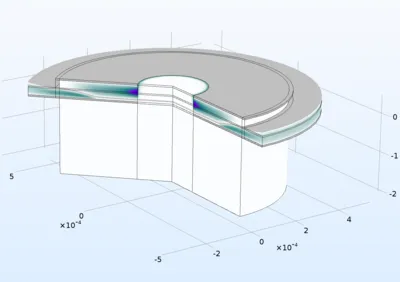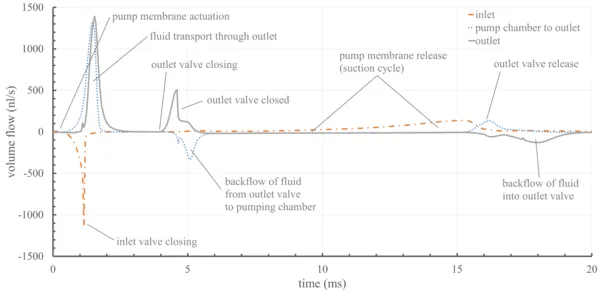Micropumps for environmental sensors in mobile & consumer electronics
Background
Identifying sources of air pollution is a key to increase the air quality in densely populated areas. Dedicated sensor systems integrated into personal mobile devices facilitate the monitoring of environmental data with much higher local and temporal resolution compared to static state-of-the-art measurement stations. However, minimal concentrations of pollutant gases, which might be harmful especially for vulnerable people, are hard to detect. Combining the respective sensors with appropriate actuators enables more precise measurement as well as faster detection by speeding up and augmenting the supply of ambient air. A fully integrated micropump can be the solution to minimize installation space, power consumption as well as device cost. [1-4]
In cooperation with Infineon Technologies AG, we develop the next generation of micropumps, making use of an existing, well-established and well-specified industrial manufacturing process.
Simulation, Test & Measurement
In order to speed up the design process, finite-element-based simulation models of the micropump are used to carry out fluid-electro-mechanically coupled simulations. Challenges like the moving and deforming mesh of the fluidic domain, the nonlinear pull-in behavior of the electrostatic actuation or mechanical contact problems need to be overcome by sophisticated modelling techniques. The simulation results are used to thoroughly investigate the dynamic behavior of the different parts of the pump as well as their mutual interplay.
A large variety of different tests is necessary to assess the functionality of the micropump prototypes. The test procedures range from impedance measurements over laser vibrometry to mass flow measurements, in order to characterize the electrical, mechanical as well as fluidic properties of the devices.
References
[1] G. McKinley, et al., „Quantification of Local and Global Benefits from Air Pollution Control in Mexico City“, Environmental Science and Technology, Volume 39, No. 7, 2005, pp. 1954-1961.
[2] S.A. Rizwan, et al., „Air Pollution in Delhi: Its Magnitude and Effects on Health“, Indian Journal of Community Medicine, Volume 38, 2013, pp. 4-8.
[3] M. Ando, et al., „Indoor and Outdoor Air Pollution in Tokyo and Beijing Supercities“, Atmospheric Environment, Volume 30, No 5, 1994, pp. 695-702.
[4] World Health Organization, WHO Guidelines for Indoor Air Quality: Selected Pollutants, Geneva, 2010. ISBN-13: 978-92-890-0213-4


